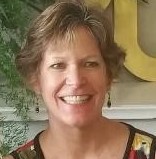
James McClean
Department: Workforce
Tell us about your background and your work at Regions Hospital.
I serve as the Director of Government Relations for HealthPartners’ hospital and clinic system, where I work as an advocate for health care providers and patients at the Minnesota Capitol. I have played a crucial role in securing licensed beds for Regions Hospital's trauma center, ensuring its ability to address a wide range of community needs, from everyday injuries to pandemics. In addition to representing HealthPartners on the Workforce Innovation Board of Ramsey County, I also serve on the Saint Paul Business Review Council and the Minnesota Hospital Association’s Policy & Advocacy Committee. Outside of HealthPartners, I serve on the board of the Saint Paul Downtown Alliance and was appointed by the Governor to the Capitol Area Architectural and Planning Board. I hold a BA from Stanford University and a Juris Doctor from the University of Minnesota Law School.
What are some of the biggest challenges facing the healthcare industry in Ramsey County at this time?
One of the biggest challenges currently facing the healthcare industry in Ramsey County and across the country is the high vacancy rates in healthcare roles. The community we serve in Ramsey County is experiencing both population growth and an aging demographic, leading to an increased demand for a broad range of healthcare services. However, many healthcare professionals are nearing retirement age, and the impact of the pandemic has worsened the existing demographic challenges.
Frontline healthcare workers have demonstrated unprecedented dedication in serving the community, but their exceptional efforts have taken a toll. The past few years have been incredibly demanding, resulting in increased burnout among healthcare professionals and an understandable desire for more flexible work schedules. These factors have made it more complex to maintain full staffing levels in our healthcare facilities. I encourage you to view the Workforce Report recently published by the Minnesota Hospital Association for a deeper dive into these trends.
Where do you see the most opportunities for individuals looking to start a career in healthcare?
On the bright side, where there are challenges, there are also opportunities. The shortage of healthcare professionals creates a greater emphasis on training and development within the industry. Many healthcare organizations now offer scholarships, tuition reimbursement, and other forms of support for individuals pursuing healthcare-related degrees or certifications. We are witnessing an increase in pathways to advancement within the industry, with a focus on lifelong learning and career growth.
The healthcare industry provides a wide range of job opportunities, spanning from highly specialized roles like doctors and nurses, which require extensive training, to various entry-level positions that require less initial training but still offer good wages, job security, and room for advancement. There are numerous roles available that cater to different skill sets and interests. These include Medical Assistants, Pharmacy Technicians, Radiology Technicians, Physical Therapy Assistants, Phlebotomists, and those in Food Service, just to name a few. Each of these roles plays a vital part on the healthcare team. These positions require minimal initial training, making them accessible entry points into this rewarding field. Moreover, these jobs can serve as steppingstones to more advanced positions in healthcare. Many healthcare organizations now provide on-the-job training, mentorship programs, and career development resources. An excellent example is Ramsey County's Learn and Earn Program, where we partner with Minnesota Training Partners to offer a free 8 to 12 week program that pays you to learn to be a clinic assistant!
Additionally, we are witnessing an encouraging increase in diversity within the healthcare workforce. This is a positive trend, as a diverse workforce is better equipped to serve our diverse community. I am proud to share that HealthPartners is a leader in this area. In 2022, we welcomed over 6,500 new colleagues to the organization, with 36.9% of them being people of color. Colleagues of color made up 21.7% of all promotions at HealthPartners in 2022.
We still have many challenges and a lot of work to do on the healthcare workforce front, but that means there are also many promising opportunities for those seeking to enter or advance in the field. With an array of diverse job roles, accessible entry points, and an emphasis on lifelong learning, the healthcare industry can lead the way toward a more inclusive and skilled workforce, ready to serve the needs of our diverse community. Together, we can build a healthier future for all.











